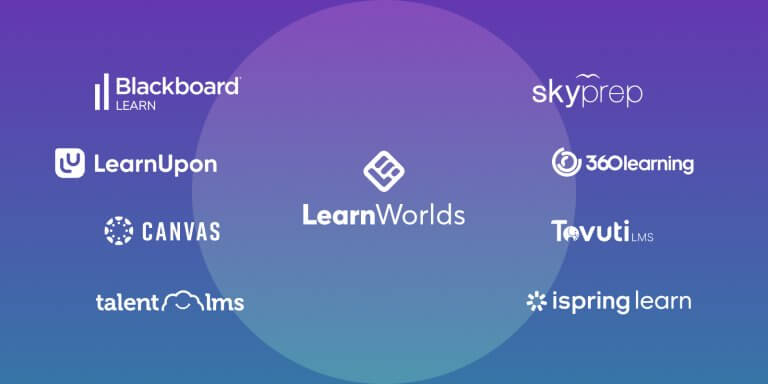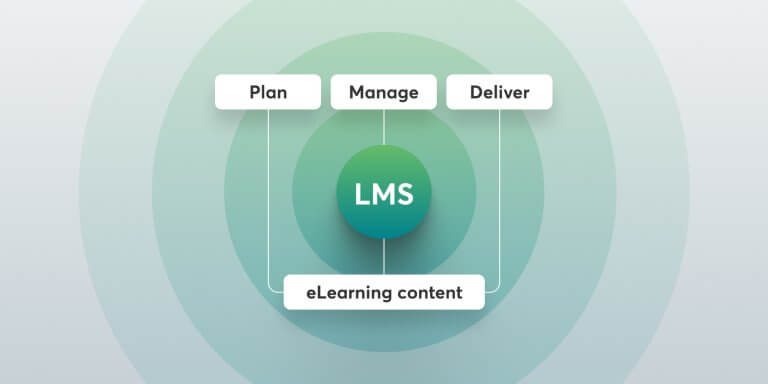Table of Contents
Traditional online classes frequently feel isolating and leave students feeling stuck. Adopting a social learning LMS can change this, making courses more relevant and, importantly, memorable.
Social learning mirrors the way we naturally learn in life via conversation, observation, and simply by learning from others. By participating in discussions and group work, learners better understand and remember information.
Which is why I believe that social learning can be one of the most effective practices for learning and retention. Not to mention, the global LMS market is projected to reach $82 billion [1] by 2032 with a CAGR of 17.1%.

Global LMS market share per industry, 2024 (Image source: Fortune Business Insights)
What is a social learning platform?
A social learning platform is a tool that allows learners and instructors to share knowledge, collaborate, or interact with each other in real time.
Rather than following in the footsteps of its predecessors (eg traditional elearning systems which are based on passive individual content consumption), social learning platforms focus on interaction. They center around building a community and solving problems together as a group, just like a real class or workspace.
Social learning theory foundations
Social learning theory is based on the concept that individuals learn new behaviors, attitudes, and emotional responses by observing and imitating others. Developed by psychologist Albert Bandura, this type of learning focuses on the idea that a person can learn by observing others, not only through direct experience.
Unlike previous behaviorist theories, which focused only on behavior reinforcement, social learning theory combined behaviorism with cognitive factors. It further suggests that cognitive elements, such as beliefs and expectations, are an important component of learning processes and that reinforcement isn’t necessary for an individual to learn a new behavior.
Social learning management system vs traditional LMS
The following table summarizes the most important features that differentiate social learning LMS solutions from traditional ones.
In brief, social learning LMS platforms focus on creating ways to allow learners to interact, collaborate, and create an online community. These steps push learner retention, application of knowledge in practice, and peer engagement to new limits.
Benefits of an LMS with social learning tools
An LMS with social learning tools makes it fun and effective to practice and retain. Here’s a sampling of some of the biggest advantages you’ll get:
💡Read also: LearnWorlds built-in community: Adding value to your ed-business offering
Key uses and scenarios for an LMS for social learning
Let’s explore how you can use a social learning LMS to grasp its full potential.
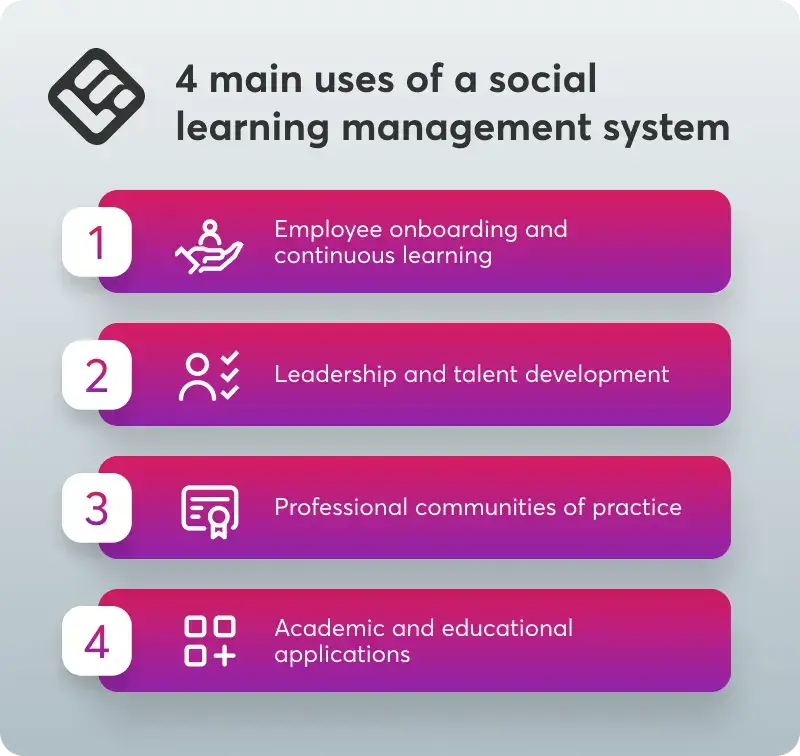
Employee onboarding and continuous learning
As with most aspects of employee onboarding, a social learning LMS provides a connected, supportive, and interactive experience for new employees. Beyond mandatory compliance or orientation modules, social elements such as discussion threads, group projects, and mentorship connections help new team members get used to the culture of their company.
Uku Soot, Organizational Growth Strategist at IPB Partners
Introducing new hires to experienced peers and fostering openness make learning a more enjoyable and continuous process. Access to collaborative learning activities, resources, and social feeds also allows employees to share best practices long after onboarding is done.
Wayne Lowry, Marketing Coordinator at Local SEO Boost
Leadership and talent development
Leadership and talent develop best when you allow aspiring leaders to learn from (and with) their peers and mentors. Social learning platforms do this with features such as group discussions, peer feedback, collaborative simulations, and shared reflection on real workplace challenges.
Maegan Damugo, Marketing Coordinator at MacPherson’s Medical Supply
Such challenges promote knowledge transfer, expose new leadership, and dismantle institutional silos. Gamification, real-time feedback, and analytics personalize development paths and make leadership training more relevant.
Academic and educational applications
Forums, peer review sessions, group assignments, and instructor-moderated live events encourage students to interact more with each other. This is something even traditional learning methods struggle with.
For instructors, social LMS solutions provide a window into student engagement and a bridge towards formative assessment. The outcome is a more connected, active, and effective educational experience where learners and educators are better prepared to work in the real world.
Core features of social learning platforms
Many collaborative learning tools come with social learning features like forums, peer feedback, multimedia integration, reporting, and gamification. So, what are the key features that support learner engagement, knowledge retention, and learner satisfaction?
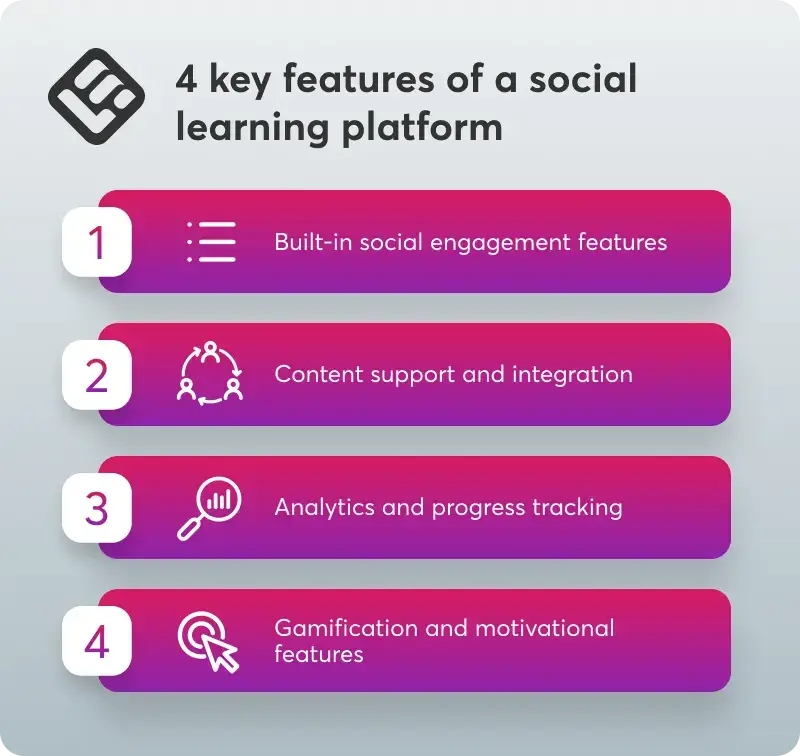
Built-in social engagement features
The most popular social engagement dynamic features include forums, group chats, live Q&A, private messaging, and community areas. Students should be able to comment and react, supporting peer-to-peer learning, group projects, and constructive critiques.
Most platforms also include user profiles, which means members can show off their expertise and interests and make learning more personal.
Content support and integration
Support for content and integration with external sources make it easy for teachers and students to combine and explain a variety of media and access them on any device. Large platforms also have extensive integration capability with frequently used tools, such as Google Meet, Zoom, or popular social media platforms.
Analytics and progress tracking
How good a social learning platform is depends on how strong its analytics and progress monitoring features are.
They track individual and group engagement, including forum activity, completion of assignments, participation in group activities, and time spent on learning activities. Such extensive analytics let organizations identify skill gaps, tailor learning paths, track where learners excel, and optimize learning.
Gamification and motivational features
Gamification comes with functionalities like points, badges, leaderboards, and achievement levels. These provide learners with a sense of advancement to keep them driven and turn learning into entertaining “tasks” to keep users involved.
Leading social learning LMS platforms
Below is a detailed look at how each top LMS solution supports social learning in practice.
1. LearnWorlds
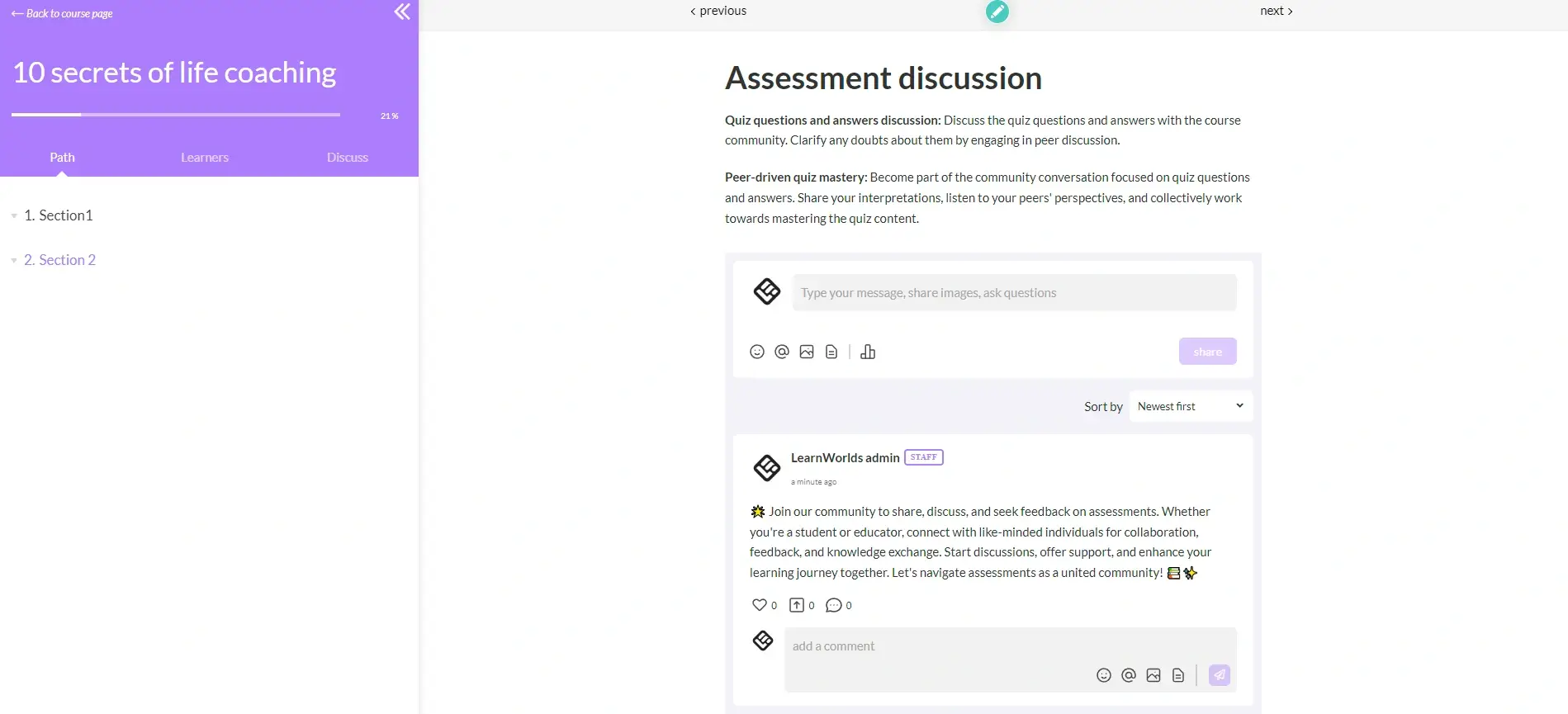
LearnWorlds brings in a unique combination of course creation and social aspects. You can use it to promote social learning by creating course communities, setting up dedicated discussion spaces, and embedding social activities within your courses.
Use social learning activity templates to ask questions, collect feedback, run Q&As, and set collaborative tasks. LearnWorlds’ features also include a built-in community, integrated discussion forums, and peer interactions, so you can easily offer courses where students can talk to each other, give and receive peer feedback, and work collaboratively on group projects.
💡Check out LearnWorlds’ solutions to read customer stories per industry.
2. Teachfloor
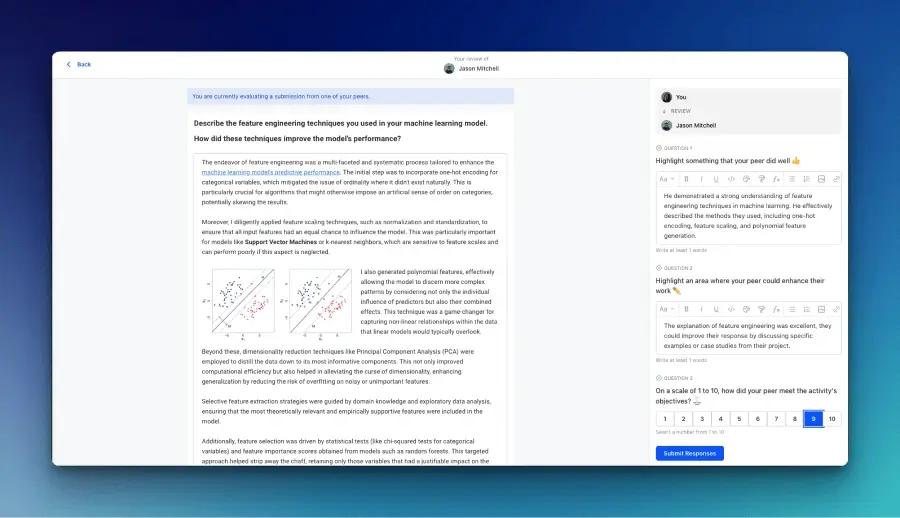
Through Teachfloor, students can take live classes, work on class projects collaboratively, and participate in dynamic discussions. Its peer review and class assignments functions let teachers support knowledge exchange and critical thinking. Teachfloor’s in-built community tools do away with the need for other communication apps, so students can discuss, share resources, and interact directly.
3. Eduflow
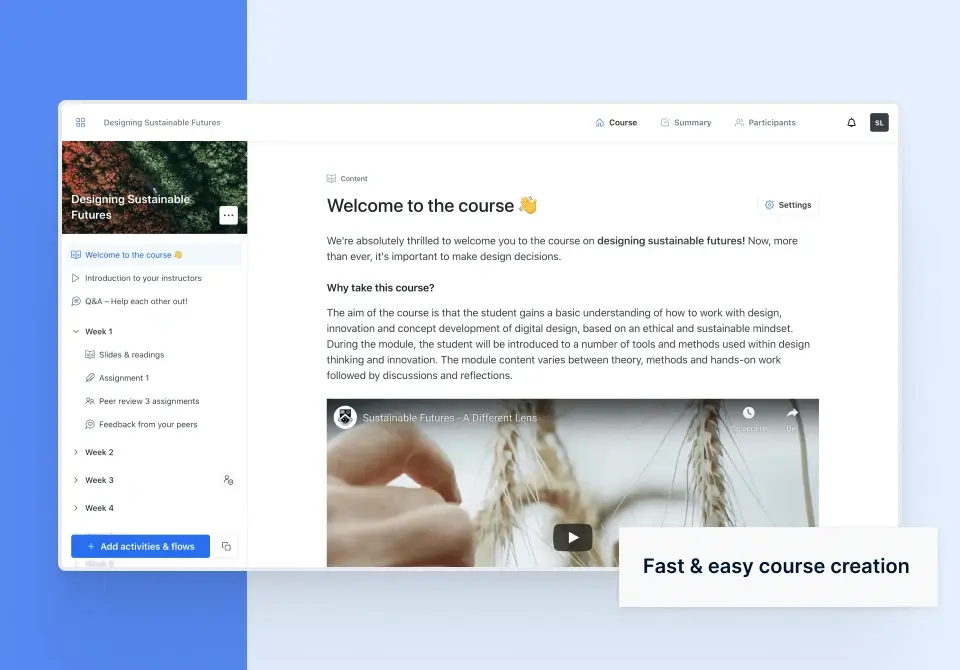
Eduflow is more of a learning experience management system for teachers and trainers. Users can create interactive, social courses through rich authoring tools and put peer feedback activities, group assignments, and discussion threads into the mix. On this social interactive learning platform, you can use templates for onboarding, skills practice, and leadership development by tracking progress on engagement and knowledge retention.
4. Docebo

Docebo is good at combining formal learning with social and informal learning in one platform. The “Discover, Coach & Share” module lets users ask questions, share items, and connect with experts via knowledge libraries. Docebo’s mobile and gamified learning also allow for social learning to become more accessible for all users.
5. 360Learning
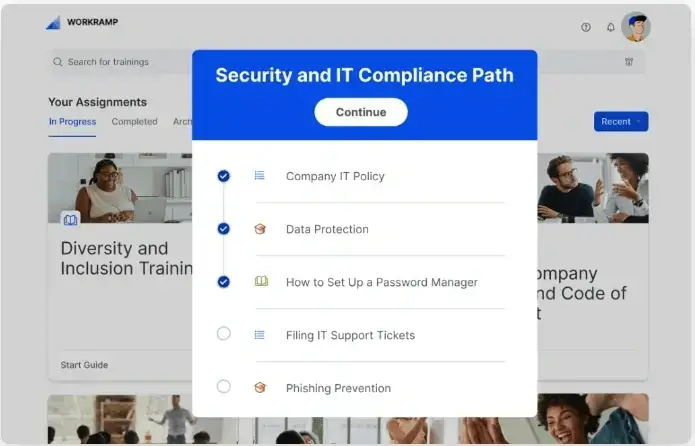
A major theme behind 360Learning is the importance it places on course creation to keep learning materials updated with peer-generated information. Learners can join discussion forums, providing feedback on courses and asking questions within modules. Deep analytics give more insights into engagement and skill progress, while integrations with Slack and Microsoft Teams enable smooth social learning in the flow of work.
6. TalentLMS
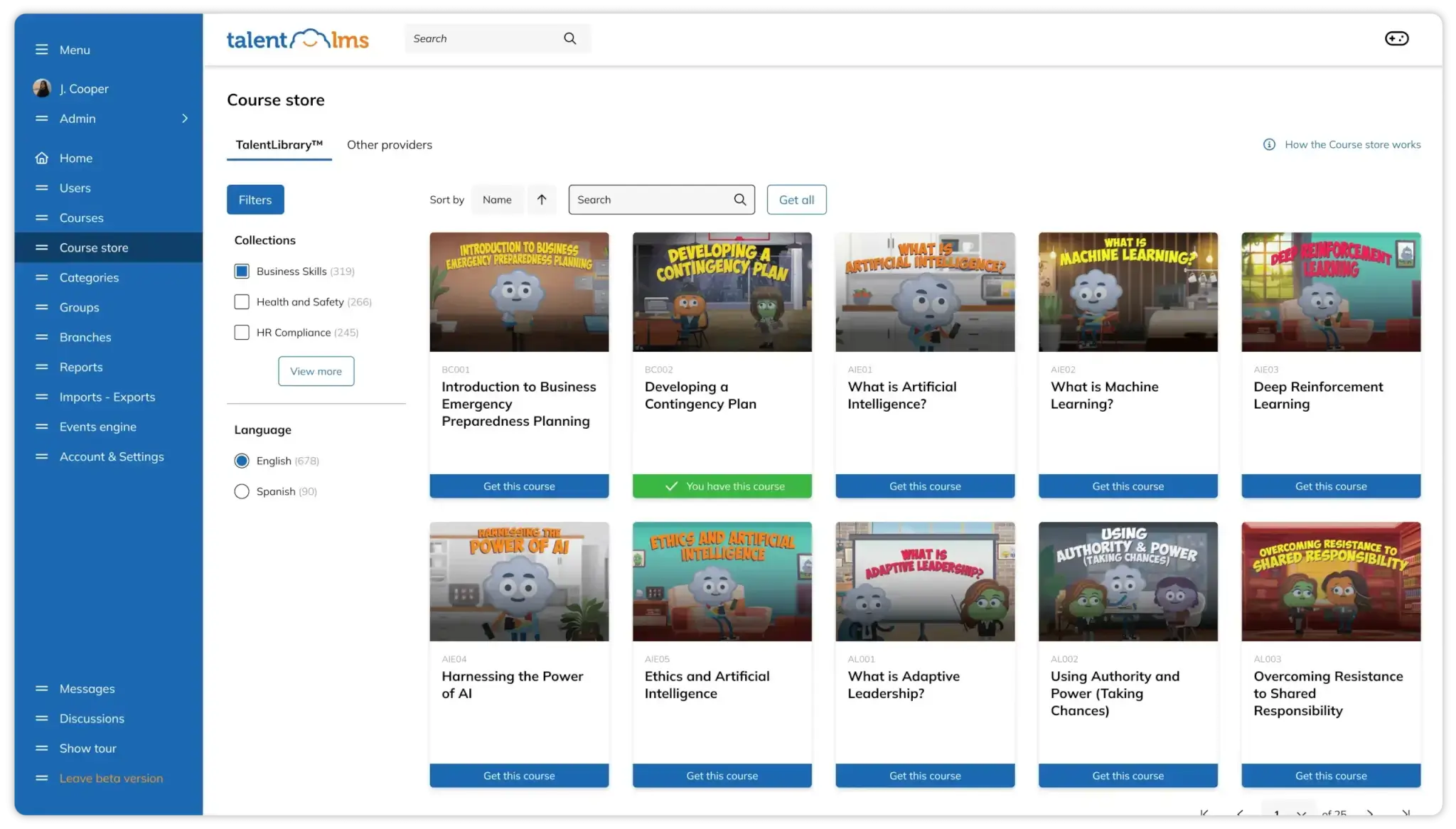
TalentLMS offers social learning through discussion boards, forums, and working on shared projects. It also provides a gamified, peer-reviewed environment for group work. Blended learning is also supported.
7. Litmos
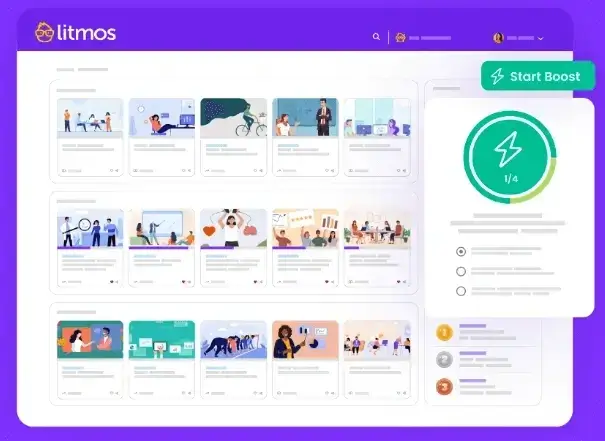
Designed for businesses looking to increase learner engagement, Litmos comes with advanced social learning and collaboration features such as forums, leaderboards, and virtual events. Litmos also encourages knowledge sharing with gamification, AI-based content recommendations, and downloadable learning resources.
8. Moodle
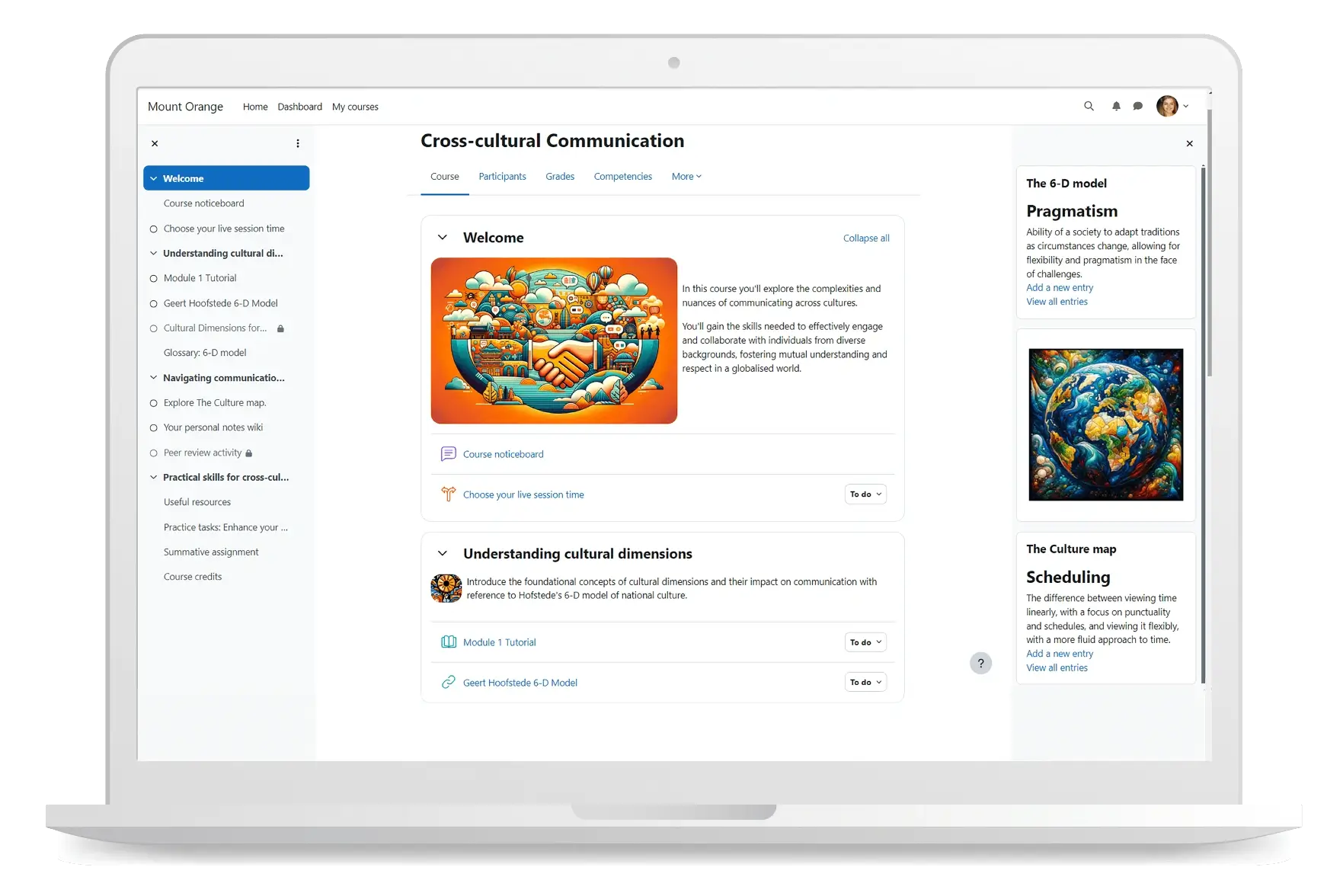
Forums, wikis, and group projects enable educators in Moodle to create peer-review processes, run real-time discussions, and encourage student debate. With flexible plugins, Moodle allows organizations to create distinctive, collaborative social spaces that foster the exchange of ideas and maintain the momentum of ongoing learning.
9. Tovuti
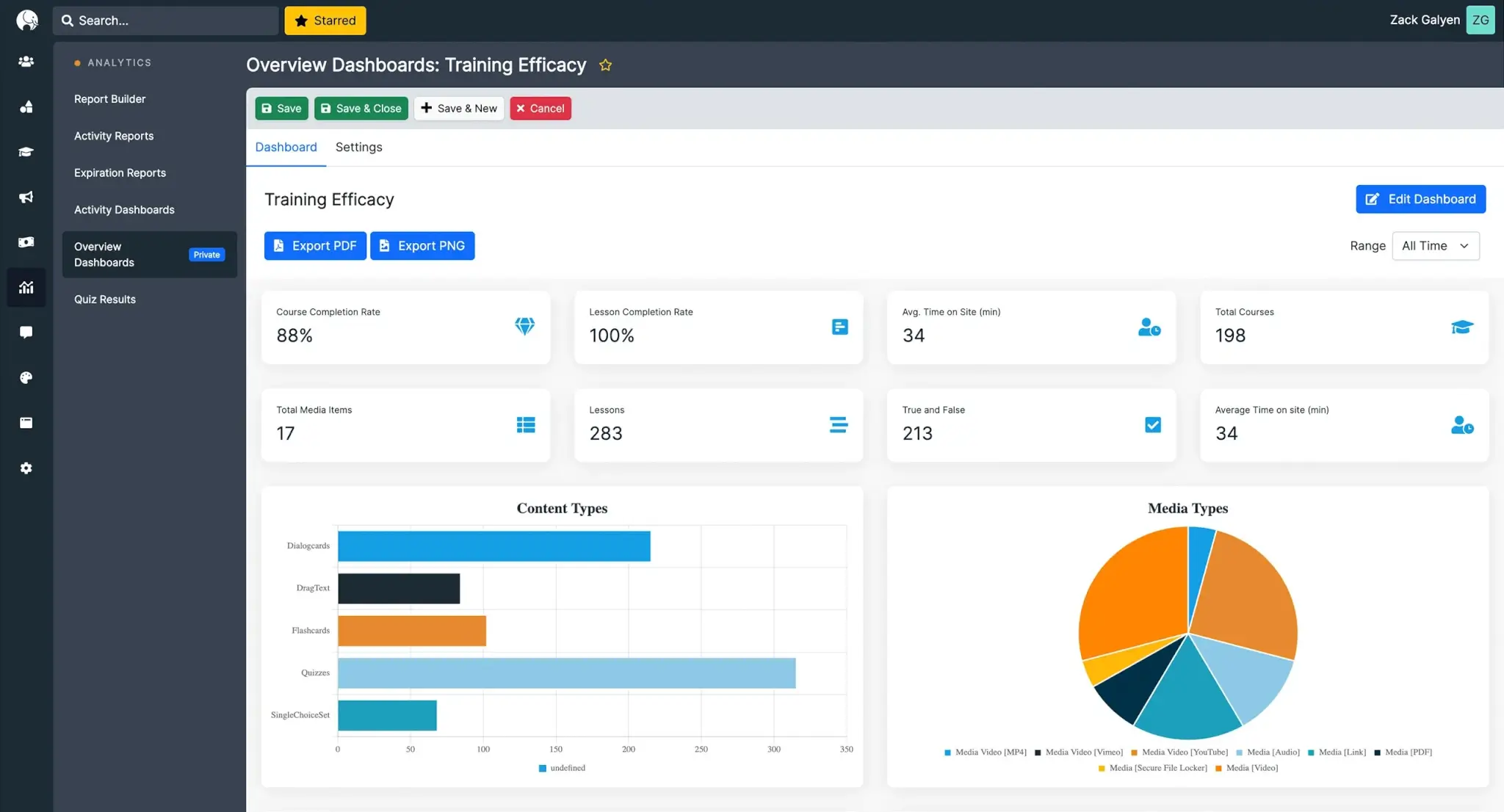
With Tovuti, learning facilitators can implement group activities, encourage knowledge exchange, and use content authoring tools for embedding social learning moments (eg polls, Q&As, and breakout tasks).
10. iSpring Learn
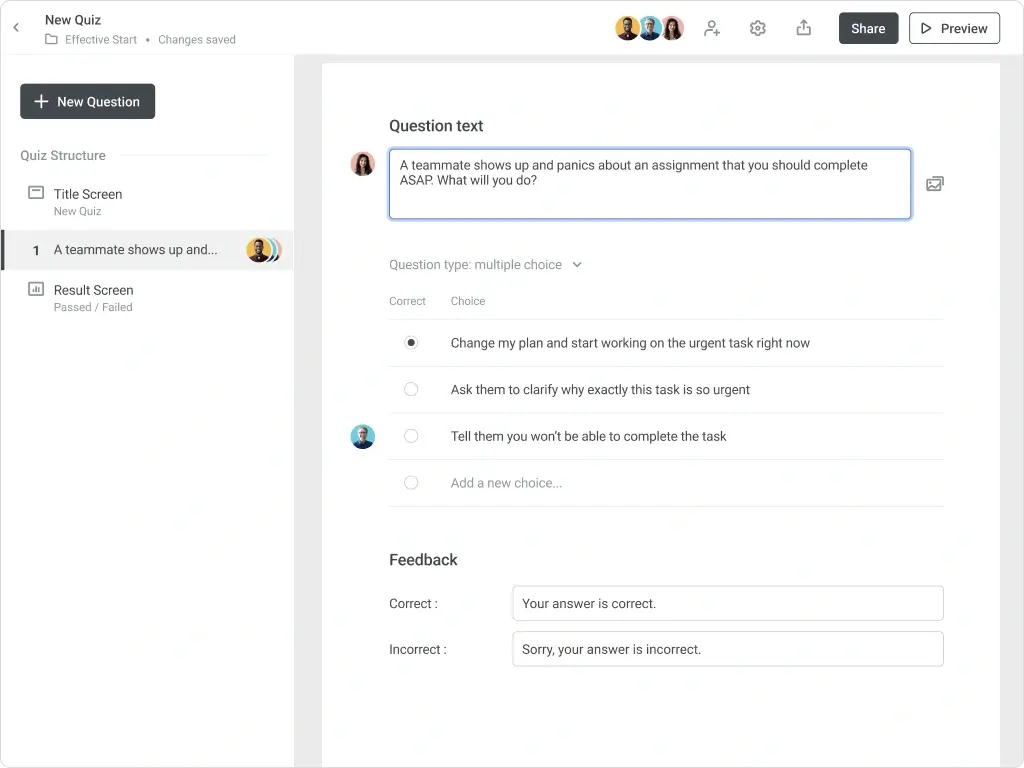
iSpringLearn offers an easy way to organize group activities, mentor programs, and projects to work on together. This gives learners and trainers plenty of ways to communicate in real-time and asynchronously.
11. Cornerstone OnDemand

Cornestone OnDemand users can participate in work groups, share knowledge, and peer mentor with their friends, all while being tracked with reporting capabilities built into the system. Its open platform powers networking, problem-solving communities, and leadership networking via an adaptable social learning system.
How to choose the best social learning platform for your business
To make the right call, you need to look past the bells and whistles and consider how well each platform competes with your individual learning needs, integration requirements, and user experience wants.
Critical attributes to consider in choosing a social learning platform include:
Get the best social LMS solution with LearnWorlds
Looking for a really interactive, collaborative online learning experience? LearnWorlds is the perfect social LMS option that combines a robust course creation suite with powerful social elements like integrated communities, live discussions, and activity-driven group features.
It’s also equipped with built-in forums, spaces designed for sharing and discussing focused topics, and interactive templates for activities such as self-reflection, real-time Q&A, and group projects. These promote meaningful discussion between learners, educators, and peers.
Keen to discover why LearnWorlds offers the ultimate social LMS? Start your own free 30-day trial to discover a more interactive, community-focused model of online education.
Sources
[1] Fortune Business Insights: Learning Management System (LMS) Market Size, Share & Industry Analysis

Alexandra Cote
Alexandra Cote is a SaaS growth marketer and online instructor who's worked with dozens of brands in the MarTech, HR tech, and productivity space. She's also a strong supporter of staying happy at work and choosing a healthy career path.
FAQ
Everything you have ever wondered, but were too afraid to ask...


